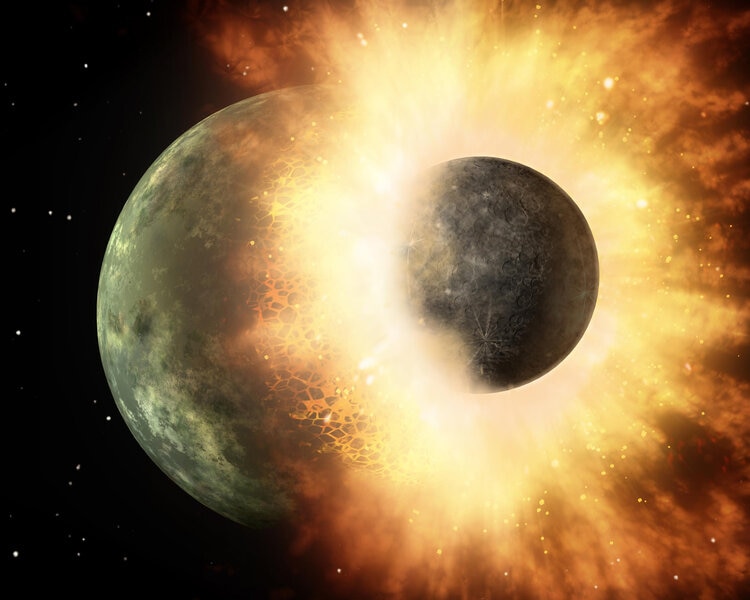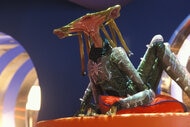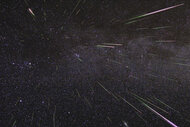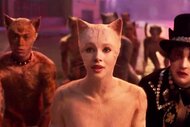Create a free profile to get unlimited access to exclusive videos, sweepstakes, and more!
You think your family’s Turkey Day dinner is rough? Try what HD 172555 is serving.
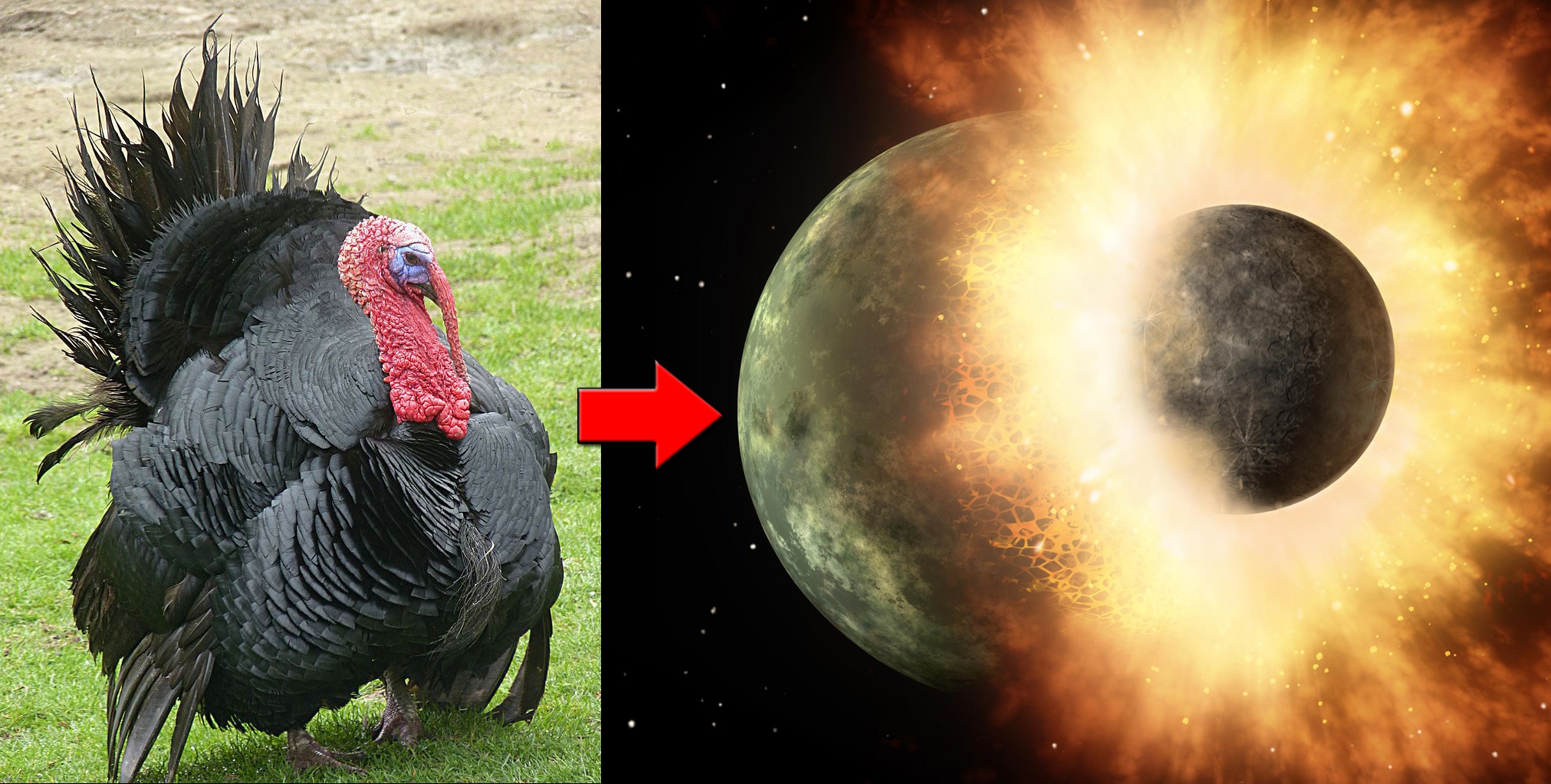
Earlier this week I was wondering what to write about on Thanksgiving, a national U.S. holiday where we give thanks for various things we're, um, thankful for. Traditionally, the Thanksgiving Day meal is turkey, a large, somewhat terrifying bird that's more or less a giant chicken but is, somehow, even meaner.
That got me thinking: There's a constellation visible to southern hemisphereans called Pavo. Officially, the constellation is supposed to represent a peacock. However, in some languages pavo means turkey.
Good enough for me. So I looked up interesting objects in Pavo the Peacock/Turkey that I could write about, something that people could talk about over dinner, and found a doozy: HD 172555. I first reported this back in 2009, but given reasons I hope will become clear, it's worth telling again. Contemplate this while you digest your mashed potatoes and cranberry yumminess.
HD 172555 is name of a star, the 172,555th entry in the Henry Draper catalog. It's about twice as massive as the Sun, and as usual for heftier stars it's hotter (about 8000 K) and more luminous (emitting nearly 10 times as much light as the Sun does). Because of this, even though it's 95 light-years away, it still shines brightly enough (barely) to be seen with the naked eye.
It's also young. It appears to be moving along in space with a bunch of other stars called the Beta Pictoris Moving Group, which, using various methods, has been dated to be over 20 million years old. As stars go that's infancy; the Sun is 4.6 billion years old, over 200 times as aged.
Now this is where things get interesting. Beta Pictoris, the eponymous star of the moving group, has a huge disk of dust surrounding it, so big it's easily visible in modern telescopes. It also has at least one planet orbiting it, which has also been directly detected in astronomical images. HD 172555 and Beta Pic have almost identical characteristics in terms of mass, luminosity, color, and so on. Could HD 172555 have a big disk too?
Astronomers looked using Hubble, but didn't see anything as big as Beta Pic's disk. But HD 172555 was emitting too much infrared light for the kind of star it is, and that's what you expect from a star that has a warm disk of dust around it (warm things emit infrared light). Maybe the disk was way smaller than Beta Pic's, so it was closer in to the star's glare and therefore harder to spot?
So astronomers turned to another space telescope: Spitzer. That's optimized to look at objects emitting infrared light, and can even break that light up into a spectrum, individual colors, which can reveal things like the composition of the material emitting the light.
And this is where things go from "interesting" to "holy crap!"
What they found is a lot of fine dust orbiting the star close in (less than a billion kilometers out; between the sizes of the orbits of Jupiter and Saturn in our solar system). This dust belt is made up of small particles about a micron across — a typical human hair is 100 microns wide, for comparison. The amount of dust adds up to about 1019 – 1020 kilograms — roughly the mass of an asteroid nearly 200 km wide. But instead of it being one body, it's like it's been ground up into powder and spread around the star. The dust is high in silica, which, chemically, suggests it formed in a high-temperature event. Hmmm.
They also found evidence of a dust belt of much larger grains, 100 microns wide, that could total up to 1023 kilograms. That's more than the mass of the Moon. Whatever made the fine dust probably made all this bigger stuff, too. But what could do that?
But then, as I read the journal paper about this, when I got to this part the hair on the back of my neck stood up on end: They also found about 1022 kilos of SiO gas. That's a lot of gas considering that it shouldn't be there at all. This kind of gas is made when you expose a rocky body to very high temperatures, and it should long ago have condensed out into a solid. The astronomers conclude it can't be more than about 100,000 years old.
Have you put all these clues together yet? Some event created a lot of high-temperature debris, something on the scale of a planetary catastrophe. The star is 20 or so million years old, the age where planets are forming but may not yet be on stable orbits. Close encounters are common, and in fact they can get even closer to each than that. A lot closer.
What the data are telling us is that very recently in a cosmic sense, just 100,000 years ago, two large planet-sized objects collided at high speed.
I'm sorry, let me rephrase that. 100,000 years ago in this star system, TWO PLANETARY-SIZED OBJECTS COLLIDED AT HIGH SPEED AAIIIIIIEEEEEE!
It's the only thing we know of that could have created that much dust and gas with that distribution. And we know these things happen; it's likely this is precisely how our own Moon formed, with a Mars-sized planet hitting the proto-Earth at a grazing angle.
This must be very much like what happened with HD 172555's planets. A planet was on an orbit that crossed the orbit of another (perhaps the first one got tugged hard by a forming gas giant, and the gravity whipped it into an elliptical orbit that dropped it down close in to the star). These two bodies collided, an event so ridiculously violent that it shattered their outer layers, blasting away a hundred million trillion tons of rocky material while heating it to incandescence.
Now do you see why this spooked me? This is an apocalyptic event, a cataclysm billions of times more powerful than the detonation of all the nuclear weapons on Earth combined.
The fact that such things happen at all is incredible. The fact that it happened here, many times over, in our solar system billions of years ago is also mind-boggling. And it must be extremely common; if we see it in what is otherwise a typical young star just a hundred light-years away, it must be happening everywhere in our 100,000 light-year-wide galaxy.
Planetary collisions, events so violent they destroy any sense of scale in our brains, are common. Common.
So there you go. Now you know, because I wanted to find something related to Pavo, the not-quite turkey constellation.
And if there's a lesson here, let me gently suggest this: Do you think your family's dinner conversations are volatile? Maybe what's needed is a little perspective. It could be worse; it's probably not the end of the world. Be thankful for that.
